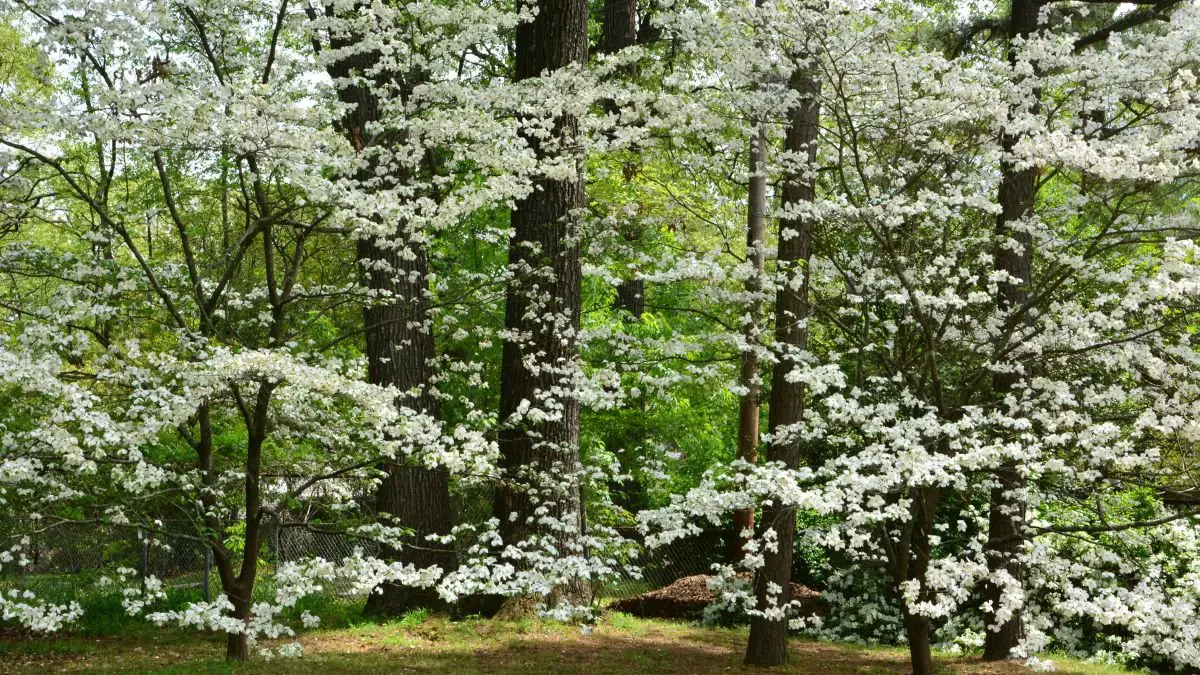
Pruning dogwoods is a crucial gardening task for maintaining their health, beauty, and buds. Dating back centuries, this practice has evolved to ensure optimal growth and flowering. By understanding the proper techniques, you can enhance the overall well-being of your dogwood trees. In this guide, we will delve into the art of pruning dogwood trees, providing you with essential tips and step-by-step instructions to help you master this skill effectively. Whether you are a novice gardener or a seasoned enthusiast, learning how to prune dogwood trees correctly will contribute to the vibrancy and longevity of these beloved ornamental plants.
Key Takeaways
- Regular pruning, cutting branches and stems, is essential for the health and aesthetics of dogwood trees.
- Follow a step-by-step pruning guide to ensure proper maintenance and growth of your dogwood trees.
- Utilize the best techniques for pruning, such as removing dead or diseased branches and shaping the tree for optimal structure.
- Consider seasonal pruning tips to enhance flowering and overall tree health during different times of the year.
- After pruning, focus on maintaining tree health by watering, fertilizing, and monitoring for any signs of stress or disease.
- Avoid common pruning mistakes like over-pruning or cutting too close to the trunk to prevent damage to the tree.
Why Prune Dogwood Trees
Boost Health
Pruning dogwood trees is essential for tree health. Remove dead or diseased branches promptly to prevent the spread of infections. Thinning out the canopy improves airflow, reducing the risk of fungal diseases. Cutting back excessive growth promotes tree vigor and overall well-being.
Enhance Appearance
Pruning plays a crucial role in shaping dogwood trees aesthetically. By trimming low-hanging branches, you can create a cleaner look and prevent obstruction. Achieve visual balance by eliminating crossing branches that may cause uneven growth patterns. Opening up the canopy enhances symmetry and allows for better light penetration.
Promote Growth
To ensure optimal growth, it's vital to prune dogwood trees effectively. Removing dead wood encourages new growth and prevents decay from spreading. Thinning out unnecessary limbs stimulates growth by redirecting nutrients to healthier parts of the tree. Cutting back on overgrowth fosters healthy development and ensures long-term vitality.
Pruning Basics
Understanding Timing
Prune dogwood trees when dormant to prevent sap bleeding, typically in late fall, winter, or early spring. This timing aligns with the tree's natural growth cycle and promotes healthy regrowth. By pruning during dormancy, you minimize stress on the tree and reduce the risk of disease or pest infestation.
Selecting the right time for pruning is crucial for tree health, as it allows the wounds to heal quickly and effectively. Avoid pruning during periods of active growth in spring and summer to prevent excessive sap loss. Proper timing also ensures that the tree has enough time to recover before facing harsh weather conditions.
Selecting Tools
For precise cuts, always use sharp and clean pruning shears when trimming small branches and twigs. These tools help maintain the tree's overall health by creating clean cuts that heal faster. Loppers are ideal for cutting larger branches, providing better leverage and control compared to shears. When dealing with thicker branches, a pruning saw is essential for efficient cutting without causing damage to the tree.
When selecting tools for pruning dogwood trees, prioritize quality and sharpness to avoid unnecessary damage or stress on the tree. Dull blades can tear rather than cut cleanly, leading to jagged wounds that take longer to heal. Regularly clean your tools with a mixture of water and bleach to prevent the spread of diseases between cuts.
Step-by-Step Pruning Guide
Assess the Tree
When inspecting the dogwood tree, look for dead, damaged, or diseased branches. These can hinder growth and invite pests. Evaluate the canopy to identify overcrowding or crossing branches, which may weaken the tree. To ensure longevity, assess the overall health and structure of the tree regularly.
Make Clean Cuts
Ensure clean cuts when pruning to prevent tearing that could harm the tree. Cutting at a slight angle helps with healing and prevents water accumulation. Avoid leaving stubs after pruning as they can attract diseases and pests.
Shape the Tree
Prune back any low-hanging branches to maintain a neat shape for your dogwood tree. Preserve its natural form while shaping it to enhance its beauty and health. Remember not to cut the leader (main trunk) excessively as this can affect the tree's growth pattern.
Remove Dead Wood
Removing dead wood is crucial for maintaining tree health. Prune out all dead branches to prevent diseases from spreading throughout the tree. By eliminating dead wood, you not only improve the appearance but also promote new growth.
Best Techniques for Pruning
Thinning Out
Thinning out the canopy of a dogwood tree is crucial for its overall health. By improving airflow, you can prevent diseases and promote better growth. Removing unnecessary limbs also helps reduce pest infestation. This process allows more sunlight to reach the inner branches, enhancing tree health.
To thin out a dogwood tree effectively, start by identifying crowded areas within the canopy. Focus on removing branches that are crossing or rubbing against each other. By doing so, you create space for proper air circulation, reducing the risk of fungal infections and other diseases. Thinning out the canopy helps in maintaining an optimal balance between growth and nutrient distribution.
Cutting Back
Cutting back on a dogwood tree is essential for controlling its size and shape. By trimming excessive growth, you can maintain a neat appearance and prevent overcrowding. When cutting back overgrown branches, make sure to do so strategically to encourage new growth in the right direction. This practice not only enhances the tree's structure but also stimulates flowering and fruit production.
When cutting back a dogwood tree, focus on removing dead or damaged branches first. Next, identify any branches that are growing too close together and causing congestion within the canopy. By selectively pruning these areas, you allow for better light penetration and air circulation throughout the tree. This promotes overall vigor and reduces the risk of disease infestation.
Seasonal Pruning Tips
Spring Care
Prune dogwood trees in spring to optimize growth and flowering. Removing dead branches during this time stimulates new growth, enhancing the tree's overall health. Shaping the tree in spring not only promotes a healthy appearance but also ensures proper structure for future growth.
Summer Trimming
During summer, it is essential to trim dogwood trees to maintain their shape and size. However, it is crucial to prune lightly during this season to avoid putting stress on the tree. Removing suckers in summer is vital as it helps in maintaining the tree's health and vigor.
Winter Preparation
As winter approaches, late fall is an ideal time to prepare dogwood trees by pruning them. Pruning during winter contributes to the overall health of the tree by removing dead or diseased branches. Shaping the tree in winter sets the stage for its growth and development in the upcoming season.
Maintaining Tree Health Post-Pruning
Watering Needs
After pruning dogwood trees, it is crucial to water them adequately to support the healing process. Proper watering helps the tree recover from the pruning stress. Monitoring soil moisture levels is essential post-pruning to ensure optimal conditions for the tree's health.
Mulching Tips
To promote tree health after pruning, mulch around the base of the tree. This helps in retaining moisture and regulating soil temperature. Using organic mulch not only conserves moisture but also enhances soil quality by providing essential nutrients. Apply a 2- to 4-inch layer of mulch around the tree, ensuring it does not touch the trunk directly.
Fertilizing Do's and Don'ts
When it comes to fertilizing dogwood trees post-pruning, do fertilize with compost under the canopy line to nourish the roots. However, avoid over-fertilizing, as excessive nutrients can be harmful to the tree's overall health. It is advisable to refrain from fertilizing directly after pruning to prevent stressing the tree further.
Shaping Dogwood Trees
Visual Balance
Achieve visual balance by shaping the tree symmetrically. Maintain a balanced canopy for aesthetic appeal and ensure the tree's structure is visually pleasing.
Achieving Symmetry
Prune to achieve symmetry in the tree's canopy and maintain a balanced appearance by removing uneven growth. Shape the tree to create a symmetrical silhouette.
Common Pruning Mistakes to Avoid
Over Pruning
When pruning dogwood trees, avoid over pruning as it can cause stress and weaken the tree. Signs of over pruning include stunted growth and sparse foliage. To maintain tree health, prune moderately.
Over pruning leads to excessive removal of branches, hindering the tree's ability to produce energy through photosynthesis. This can result in a weakened immune system, making the tree more susceptible to diseases and pests.
To prevent over pruning, follow the 20-30% rule: never remove more than one-fifth to one-third of the tree's branches in a single season. By adhering to this guideline, you can ensure that the tree retains its natural shape and vigor.
Wrong Timing
Pruning at the wrong time can have detrimental effects on dogwood trees. It is crucial to prune during the tree's dormant season, typically in late winter or early spring before new growth begins. Pruning during active growth periods can stress the tree and inhibit its ability to heal properly.
The consequences of pruning at the wrong time include reduced flowering, increased susceptibility to diseases, and overall decline in tree health. By waiting for the dormant season, you allow the tree to recover efficiently from pruning wounds.
Avoid pruning during periods of extreme weather conditions, such as high temperatures or frost. These conditions can further stress the tree and impede its recovery process after pruning.
Improper Tools Use
Using improper tools for pruning can cause significant harm to dogwood trees. Always opt for sharp, clean tools specifically designed for pruning tasks. Dull or unsanitary tools can create ragged cuts that leave the tree vulnerable to infections.
Select tools such as hand pruners, loppers, and pruning saws based on the size of branches you intend to prune. For smaller branches, hand pruners are suitable, while loppers are ideal for thicker branches. Ensure that all tools are sanitized before use to prevent disease transmission between plants.
Regularly inspect your tools for any signs of damage or wear and tear. Replace blades or handles as needed to maintain optimal cutting efficiency and minimize stress on the tree during pruning sessions.
FAQs on Dogwood Tree Pruning
Best Time to Prune
Prune dogwood trees during dormancy for the best results. Late fall, winter, or early spring are ideal pruning times. Timing plays a crucial role in tree health and growth.
Pruning Young Trees
Start pruning young trees to shape their growth effectively. Removing dead wood early on is essential for their healthy development. Prune young trees to establish a strong and balanced structure.
Signs of Over Pruning
Watch for signs of stress or decline in your dogwood tree after pruning sessions. Yellowing leaves may indicate that you have been over pruning. It's important to recognize these signs of over pruning promptly to take corrective measures.
Final Remarks
You now have the knowledge to expertly prune your dogwood trees throughout the year, ensuring their health and beauty. By understanding the importance of pruning, mastering the techniques, and avoiding common mistakes, you can shape your trees to perfection. Remember to always prioritize the well-being of your dogwood trees when pruning.
Now it's time to head out into your garden armed with these pruning tips and techniques. Put your newfound knowledge into practice and watch your dogwood trees thrive like never before. Happy pruning!
Frequently Asked Questions
Can I prune my dogwood tree at any time of the year?
Pruning dogwood trees is best done during late fall or winter when the tree is dormant. Avoid pruning during spring and early summer to prevent stressing the tree.
How much should I prune my dogwood tree?
When pruning dogwood trees, aim to remove no more than 1/4 to 1/3 of the branches. Over-pruning can harm the tree's health and affect its ability to flower.
Is it necessary to sterilize pruning tools before trimming my dogwood tree?
Yes, it's crucial to sterilize your pruning tools before and after each use. This helps prevent the spread of diseases between plants and ensures clean cuts for faster healing.
Will regular pruning help improve the overall health of my dogwood tree?
Regular pruning can enhance the health and appearance of your dogwood tree by promoting proper air circulation, sunlight exposure, and new growth. It also helps in maintaining a balanced shape and reducing disease risk.
Can I use the cut branches from pruning my dogwood tree for mulch or compost?
Yes, you can utilize the cut branches from pruning your dogwood tree for mulch or compost. Make sure to shred or chip them finely before adding them to your garden beds or compost pile for better decomposition.
Image Source: Paid image from CANVA




